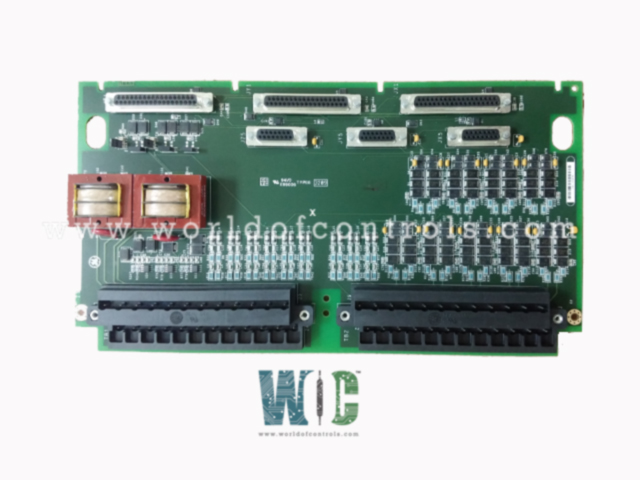
World Of Controls understands the criticality of your requirement and works towards reducing the lead time as much as possible.
IS200TPROS2C - Turbine Protection Terminal Board is available in stock which ships the same day.
IS200TPROS2C - Turbine Protection Terminal Board comes in UNUSED as well as REBUILT condition.
To avail our best deals for IS200TPROS2C - Turbine Protection Terminal Board, contact us and we will get back to you within 24 hours.
SPECIFICATIONS:
Part Number: IS200TPROS2C
Manufacturer: General Electric
Series: Mark VI
Product Type: Turbine Protection Terminal Board
Number of Inputs: 22
Common Mode Voltage Range: �5 V
Size 17.8 cm Wide x 33.02 cm High
Operating temperature: 0 to 60 �C
MPU Pulse Rate Range 2 Hz to 20 kHz
Repair: 3-7 Day
Availability: In Stock
Country of Origin: United States
FUNCTIONAL DESCRIPTION:
IS200TPROS2C is a Turbine Protection Terminal Board manufactured and designed by General Electric as part of the Mark VI Series used in GE Speedtronic Gas Turbine Control Systems. The protection terminal board is a crucial component in the overall system. It is responsible for managing and controlling the safety and functionality of the turbine. This board may include various sensors, relays, switches, and other electronic components that monitor different aspects of the turbine's operation, such as temperature, pressure, speed, and vibration. The main purpose of the turbine protection terminal board is to ensure that the turbine operates within safe limits and to prevent any potential damage or catastrophic failures. If any of the monitored parameters go beyond the acceptable range, the protection system can trigger alarms, shut down the turbine, or take other necessary actions to prevent further issues.
FEATURES:
The trip solenoids play a pivotal role in emergency turbine shutdown scenarios. Up to three trip solenoids can be connected between the TREx and TRPx (TRPG, TRPL, or TRPS) terminal boards. Both TREx and TRPx boards are part of the trip control system and collectively contribute to the turbine's ability to shut down quickly and safely in case of an emergency. Either the TREx or TRPx board can independently trigger the turbine trip, adding redundancy and fail-safe features to the protection system.
The VPRO board is responsible for providing emergency overspeed protection and emergency stop functions. In the event of an overspeed condition or a critical emergency, the VPRO board initiates immediate actions to halt the turbine's operation and prevent any catastrophic failures. These functions are essential for ensuring the safety of the turbine and the surrounding equipment.
To enhance reliability and fault tolerance, the VPRO board controls twelve relays on the TREG (TREx Generator) board. Nine of these relays are grouped into three sets of three to implement a voting mechanism. The inputs from these three sets of three relays vote on the control of the three trip solenoids, determining which solenoid should be activated in response to a given emergency situation.
CONFIGURATION:
WOC has the largest stock of GE Speedtronic Gas Turbine Control System Replacement Parts. We can also repair your faulty boards. WORLD OF CONTROLS can also supply unused and rebuilt backed-up with a warranty. Our team of experts is available round the clock to support your OEM needs. Our team of experts at WOC is happy to assist you with any of your automation requirements. For pricing and availability on any parts and repairs, kindly get in touch with our team by phone or email.
What is a Turbine Protection Terminal Board?
A Turbine Protection Terminal Board is a circuit board or terminal arrangement within a turbine's protection system. It contains various components that monitor and control the turbine's safety and operational parameters.
What is the purpose of a Turbine Protection Terminal Board?
The primary purpose of this board is to ensure the safe and efficient operation of the turbine. It monitors key parameters such as temperature, pressure, speed, and vibration to prevent potential damage and catastrophic failures.
How does the board communicate with the turbine's control system?
The board is often connected to the turbine's control system through communication protocols such as digital signals or analog inputs/outputs. This enables real-time data exchange and coordinated actions.